Discover the home of traditional Maldivian lacquerware, pristine beaches, and authentic island culture in Baa Atoll's UNESCO Biosphere Reserve
Located in the Baa Atoll UNESCO Biosphere Reserve, Thulhaadhoo Island offers visitors a unique cultural experience combined with natural beauty. This remarkable island is renowned as the last stronghold of traditional Maldivian lacquerware craftsmanship, a centuries-old art form that has been preserved by skilled local artisans.
What makes Thulhaadhoo special is its distinctive cultural heritage. The island is famous throughout the Maldives for "liyelaa jehun" (lacquerware), with artisans creating intricate, colorful designs on wooden items using natural materials and traditional techniques passed down through generations. This living cultural treasure exists alongside beautiful beaches, vibrant marine life, and a welcoming community that maintains strong connections to traditional Maldivian ways of life.
Visitors to Thulhaadhoo are drawn by the opportunity to witness and learn about this unique craft tradition, explore pristine beaches, experience excellent snorkeling in the surrounding waters, and engage with authentic island culture. For travelers interested in both cultural heritage and natural beauty, Thulhaadhoo provides a perfect blend of experiences that go beyond the typical Maldivian resort holiday.
Thulhaadhoo Island is situated in the southern part of Baa Atoll, approximately 115 kilometers northwest of Male. The island occupies a strategic position within the UNESCO Biosphere Reserve, surrounded by crystal-clear waters and vibrant coral reefs.
Its location provides excellent access to some of the region's most pristine marine environments, including several marine protected areas and the world-famous Hanifaru Bay, known for its seasonal aggregations of manta rays and whale sharks. Thulhaadhoo's position offers a convenient base for exploring the natural wonders of Baa Atoll while experiencing authentic island life and unique cultural heritage.
Thulhaadhoo Island is renowned throughout the Maldives as the last stronghold of traditional lacquerware craftsmanship (liyelaa jehun). This ancient art form has been practiced on the island for centuries and represents a living cultural heritage that continues to thrive today.

Thulhaadhoo artisans create intricate lacquerware using techniques passed down through generations. The process involves carving wooden items, applying multiple layers of resin and natural pigments, and etching detailed designs.

Visitors can observe master craftspeople at work in small workshops throughout the island, where they continue to create beautiful pieces using traditional methods and natural materials.
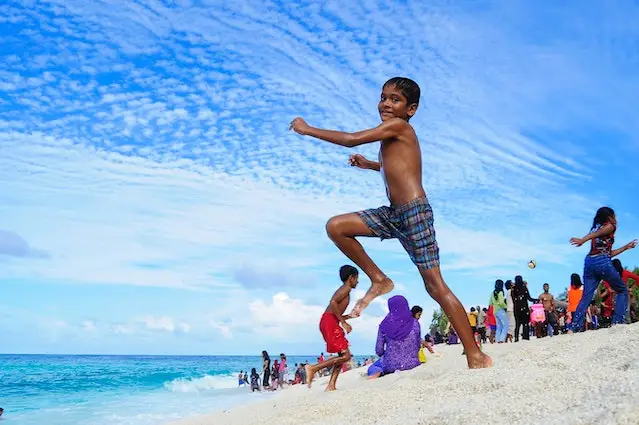
The lacquerware tradition is a source of immense pride for Thulhaadhoo residents, with skills passed from master to apprentice, often within families, ensuring this cultural heritage continues to thrive.

Visitors can purchase authentic lacquerware items directly from artisans, including decorative boxes, vases, plates, and traditional water containers, each piece representing a unique work of art.
Creating traditional lacquerware involves several meticulous steps:
This labor-intensive process results in beautiful, durable pieces that represent centuries of artistic tradition.
Lacquerware holds deep cultural importance in the Maldives:
As one of the few places where this tradition continues, Thulhaadhoo plays a vital role in preserving this aspect of Maldivian cultural identity.
Beyond its famous lacquerware, Thulhaadhoo Island maintains a rich tapestry of traditional Maldivian customs and cultural practices. The island community preserves many time-honored traditions that offer visitors authentic insights into Maldivian heritage.

Traditional music and dance remain important cultural expressions on Thulhaadhoo. Boduberu, the most popular form of traditional Maldivian music, features rhythmic drumming accompanied by dancing that gradually increases in tempo and intensity. These performances often take place during community celebrations and special occasions. The island observes traditional festivals throughout the year, including Islamic holidays like Eid, which are celebrated with special meals, community gatherings, and cultural performances.
Visitors may have the opportunity to witness or even participate in Boduberu performances, especially if their stay coincides with local celebrations. Some guesthouses arrange cultural evenings where guests can experience these traditional art forms.
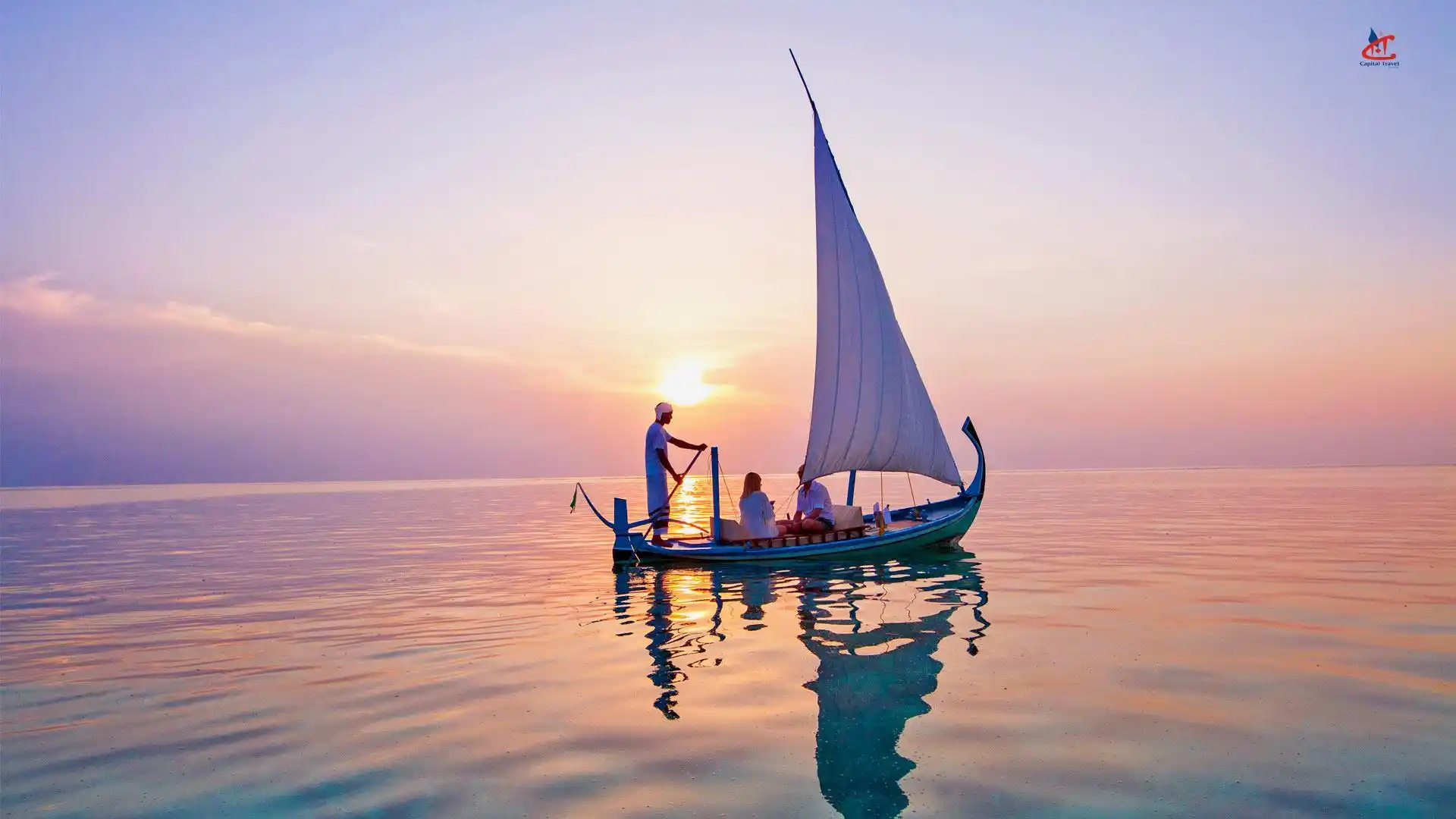
While lacquerware is the island's most famous craft, Thulhaadhoo is also known for other traditional skills. The island has a tradition of boat building, with skilled carpenters creating and repairing traditional dhonis (wooden boats) using techniques passed down through generations. Coir rope making is another traditional craft, with coconut husks processed and twisted into strong, durable rope used for boat building and various household purposes. Some families also specialize in traditional mat weaving (thundu kunaa), creating intricate patterns from dried reeds.
Visitors can observe these crafts being practiced and sometimes participate in demonstrations arranged through guesthouses. Many artisans sell their creations directly to visitors, providing authentic souvenirs while supporting local traditions.
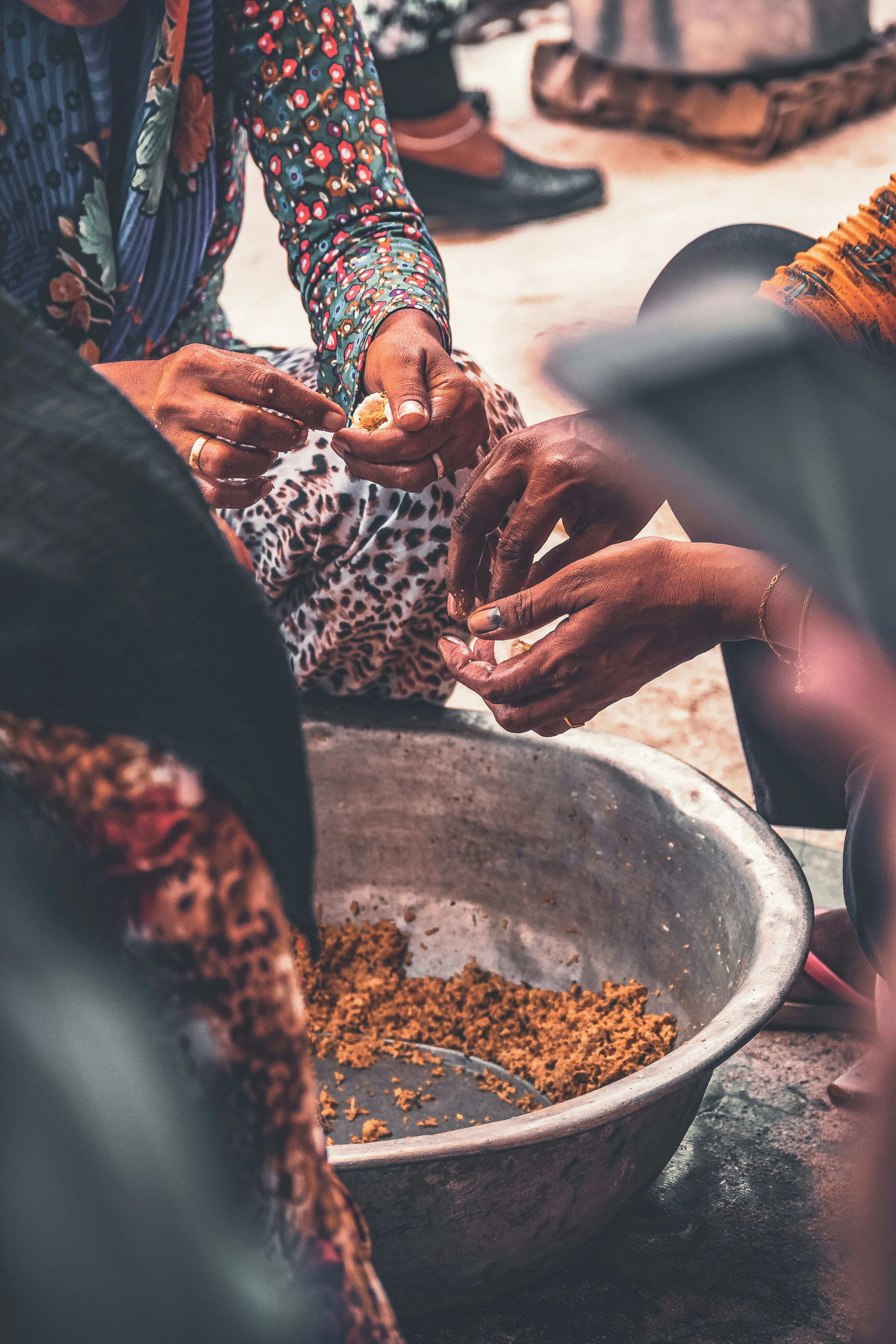
Thulhaadhoo's cuisine reflects traditional Maldivian flavors with an emphasis on seafood, coconut, and spices. Fish is the staple protein, prepared in various ways including grilled, curried, or dried and smoked. Mas huni (a breakfast dish of shredded smoked tuna mixed with grated coconut, onion, and chili) is a daily staple. Garudhiya (clear fish broth) served with rice, lime, chili, and onions is another common dish. Coconut features prominently in many preparations, from fresh coconut milk in curries to grated coconut in desserts and snacks.
Visitors staying in guesthouses typically enjoy home-cooked Maldivian meals, offering an authentic taste of local cuisine. Some hosts offer cooking demonstrations where guests can learn to prepare traditional dishes.
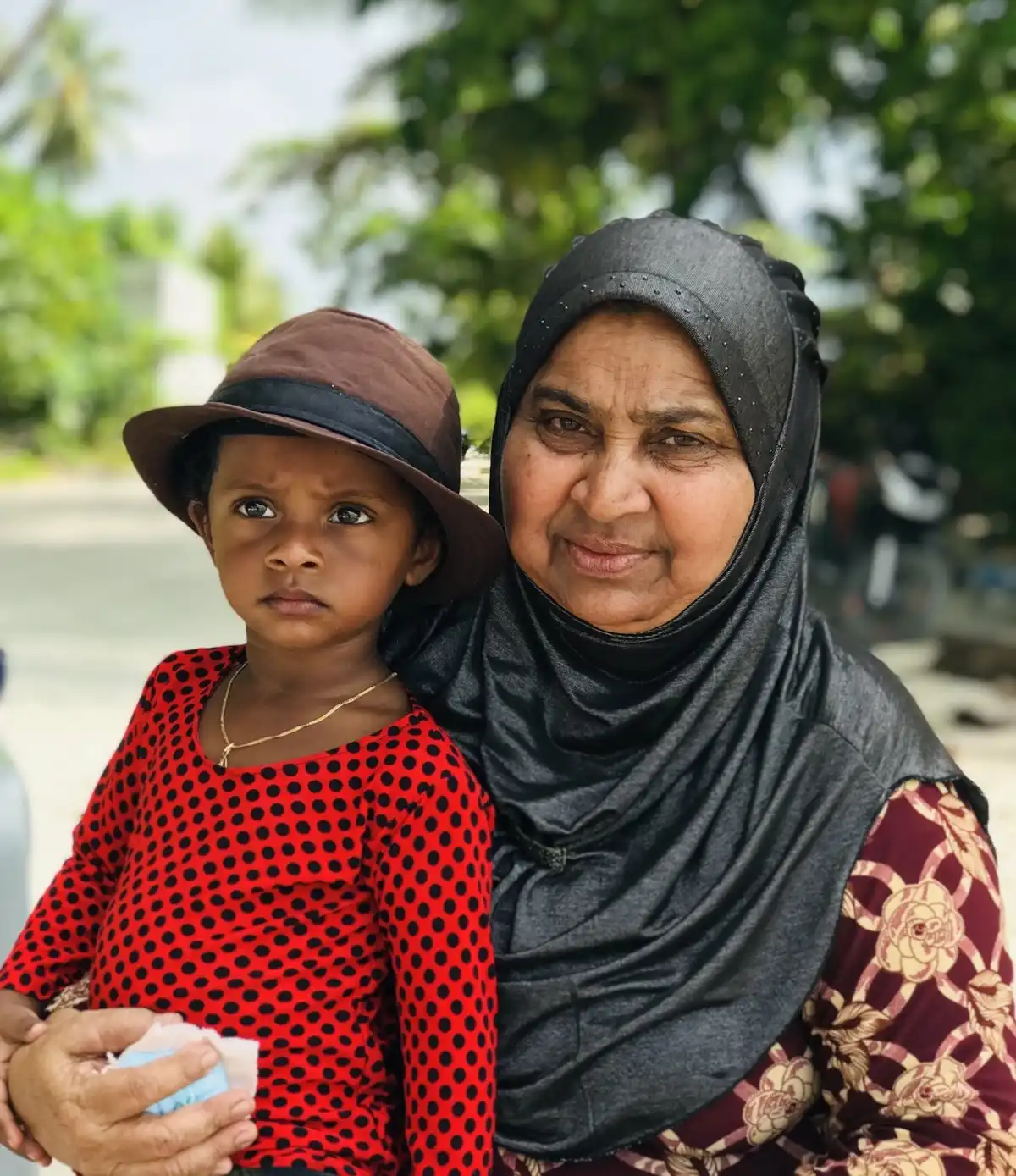
Thulhaadhoo maintains strong community bonds through collective activities and shared responsibilities. Community work projects (known as fenaka jehun) bring residents together to maintain public spaces, clean beaches, or assist with construction projects. Islamic traditions shape daily life, with prayer times marking the rhythm of the day and the mosque serving as a community focal point. Family structures remain strong, with extended families often living close together and sharing responsibilities for childcare, cooking, and household management.
Visitors can observe these community dynamics during their stay, gaining insights into the cooperative social structure that has sustained island life for generations. The genuine hospitality extended to guests is itself a reflection of traditional Maldivian values.
Thulhaadhoo offers a select range of accommodation options that focus on authentic experiences and local hospitality. While more limited than some of the larger islands, the accommodations here provide genuine warmth and a true connection to island life.

Several family-operated guesthouses offer clean, comfortable accommodations with a personal touch. These properties typically feature air-conditioned rooms with private bathrooms, home-cooked Maldivian meals, and direct access to local knowledge through the host families.
Price Range: $45-75 per night
Features: Authentic hospitality, home-cooked meals, cultural insights, local excursion arrangements

For travelers seeking deep cultural immersion, homestay experiences are available with local artisan families. These provide the most authentic glimpse into island life, with guests sharing meals and daily activities with their host family while learning about traditional crafts.
Price Range: $35-60 per night, including meals
Features: Cultural immersion, craft demonstrations, traditional meals, family interaction

A small number of simple beachfront cottages offer a more private experience while maintaining a connection to local culture. These modest accommodations provide direct beach access and a peaceful environment for those seeking a balance of comfort and authenticity.
Price Range: $65-95 per night
Features: Beach access, privacy, basic amenities, natural surroundings
Thulhaadhoo offers basic facilities that meet visitor needs while maintaining its authentic island character. The infrastructure supports daily life for locals and provides essential services for travelers without compromising the island's traditional atmosphere.
The island has several small local shops providing basic necessities, snacks, beverages, and toiletries. There are also craft shops selling authentic lacquerware and other traditional handicrafts.
Most meals are provided by guesthouses featuring fresh seafood and traditional Maldivian cuisine. The island also has a couple of small local cafés serving snacks, tea, and coffee in a casual setting.
Thulhaadhoo has a health center with basic medical services. For serious conditions, patients are transferred to Eydhafushi (atoll capital) or Male for treatment.
Mobile coverage is available from both Dhiraagu and Ooredoo networks. Most guesthouses offer Wi-Fi, though connectivity may be slower than in more developed areas.
The island relies on a combination of rainwater collection systems and groundwater. Most guesthouses provide filtered drinking water for guests, and bottled water is available in local shops.
Thulhaadhoo has a central power plant providing electricity throughout the island. Power is generally reliable, though occasional brief outages may occur. Some accommodations have backup generators.
The island has several mosques serving the local population. Visitors are welcome to view the exterior but should dress modestly and respect prayer times.
Thulhaadhoo has a harbor that serves fishing boats, cargo vessels, and visitor transfers. The harbor area is a hub of activity, especially when fishing boats return with their daily catch.
Thulhaadhoo is blessed with beautiful beaches and a spectacular marine environment. The island's location within the UNESCO Biosphere Reserve has helped preserve the surrounding reefs in excellent condition, making it a paradise for snorkeling and marine enthusiasts.
Thulhaadhoo features several beach areas around its perimeter. The western beach is particularly impressive, with powdery white sand and crystal-clear turquoise waters. The eastern beach offers a more sheltered environment, with calm waters ideal for swimming and relaxation. The northern tip of the island provides excellent sunset views across the lagoon.
The island has a designated "bikini beach" where tourists can wear Western-style swimwear. This beautiful stretch of sand provides a relaxing environment while respecting local cultural norms. The remaining beaches require modest dress as they are used by the local community.
One of Thulhaadhoo's greatest natural assets is its vibrant house reef, accessible directly from several points around the island. The reef features healthy coral formations and abundant marine life, offering excellent snorkeling opportunities just steps from the shore. The house reef's accessibility makes it possible to enjoy multiple snorkeling sessions throughout the day without needing boat transportation.


The waters around Thulhaadhoo Island offer exceptional marine biodiversity, making it a paradise for underwater enthusiasts:
The island's location within the UNESCO Biosphere Reserve has helped preserve Thulhaadhoo's marine environment in exceptional condition.
Thulhaadhoo offers a range of activities that blend cultural experiences with natural adventures. The island's unique heritage provides visitors with opportunities to connect with both Maldivian traditions and stunning natural environments.





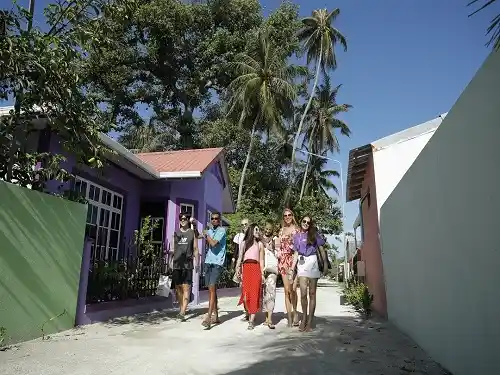


Thulhaadhoo is home to a close-knit community of approximately 1,200 residents who maintain strong traditional values while adapting to modern influences. The island's population is known for its warm hospitality, artistic heritage, and preservation of authentic Maldivian culture.
Daily life on Thulhaadhoo follows the rhythm of traditional island routines, centered around craftsmanship, fishing, prayer times, and community gatherings. Many families are involved in the lacquerware tradition, with workshops often attached to homes where artisans practice their craft. The island awakens with the call to prayer, followed by a day of work, family responsibilities, and community interactions. Evenings often find residents gathering in public spaces, sharing news, and socializing as the day cools.
Thulhaadhoo preserves many traditional Maldivian customs and cultural practices. Religious observances play an important role in community life, with festivals like Eid celebrated enthusiastically. Cultural expressions such as Boduberu performances remain vibrant, while traditional crafts including lacquerware, coir rope making, mat weaving, and boat building are still practiced by skilled artisans.
What makes Thulhaadhoo's community special is its strong artistic tradition and the pride residents take in preserving their cultural heritage. The lacquerware craft has shaped the island's identity and economy for centuries, creating a unique community where artistic skills are highly valued and passed down through generations. This living tradition creates a distinctive atmosphere where visitors can witness and engage with authentic cultural practices that have largely disappeared from other parts of the Maldives.


Discover the unique lacquerware tradition, pristine beaches, and authentic island life of Thulhaadhoo. Book your stay today for an unforgettable cultural and natural experience in Baa Atoll's UNESCO Biosphere Reserve.
Plan Your TripThulhaadhoo Island is accessible via several transportation options. The most convenient route is by domestic flight from Velana International Airport to Dharavandhoo Airport (approximately 30 minutes), followed by a 25-minute speedboat transfer to Thulhaadhoo. This combined journey costs around $120-140. A more economical option is the public ferry from Male, which operates weekly and takes approximately 8 hours, costing about $4-6 per person. Private speedboat transfers can also be arranged through guesthouses (approximately 3-4 hours from Male, costing around $70-90 per person). Island hopping is another option, with connections available from Eydhafushi (the atoll capital) via local boats. Most guesthouses on Thulhaadhoo can arrange transfers and will provide detailed information about the best options based on your arrival date and preferences. It's advisable to plan your transportation well in advance, especially during high season (November to April).
Traditional Maldivian lacquerware (liyelaa jehun) is an ancient craft that involves creating decorative items from wood, which are then coated with layers of resin and natural pigments and etched with intricate designs. The process begins with carving wooden objects like boxes, vases, or containers from specific types of wood. These are then smoothed and coated with a base layer of black resin derived from natural sources. Multiple layers of colored resin are applied, each requiring drying time. The distinctive designs are created by carefully etching through the layers to reveal the colors beneath, followed by polishing to create a smooth, glossy finish. This craft is significant because it represents one of the oldest continuous artistic traditions in the Maldives, dating back centuries. Historically, lacquerware items were used in royal courts and by nobility, and they held both practical and ceremonial importance. Today, Thulhaadhoo is one of the last places where this traditional craft is still practiced using authentic methods and materials, making it a living repository of this important aspect of Maldivian cultural heritage. The craft connects present-day Maldivians with their cultural past and provides a unique artistic expression that distinguishes the Maldives from other cultures in the region.
The best time to visit Thulhaadhoo Island depends on your interests. For general beach activities, cultural experiences, and snorkeling, the northeast monsoon season (November to April) brings dry, sunny weather with lower humidity and calmer seas. This period is ideal for water activities, with water visibility often exceeding 20-30 meters. January to March typically offers the most reliable weather conditions with minimal rainfall. If you're specifically interested in manta ray and whale shark encounters at nearby Hanifaru Bay, plan your visit between May and November, with peak season being June to October when plankton concentrations attract these magnificent creatures. The southwest monsoon season (May to October) brings occasional rain showers and slightly rougher seas, though there are still many sunny days. This period offers advantages including fewer tourists, lower prices, and the chance to witness the spectacular marine life aggregations in the UNESCO Biosphere Reserve. For cultural experiences, the island hosts various festivals throughout the year, with Islamic holidays like Eid being particularly festive times to visit. The lacquerware craft can be observed year-round, as it is not seasonal. Water temperature remains warm (27-30°C/80-86°F) throughout the year, making Thulhaadhoo a viable destination in any season depending on your preferences.
Thulhaadhoo distinguishes itself from other local islands through several unique characteristics. First and foremost is its status as the center of traditional lacquerware craftsmanship in the Maldives. This ancient art form has been preserved on Thulhaadhoo when it has largely disappeared from other islands, creating a living cultural heritage that visitors can experience firsthand. Second, the island has a larger population than many local islands, resulting in a more vibrant community with diverse activities and cultural expressions. Third, Thulhaadhoo's location within the Baa Atoll UNESCO Biosphere Reserve provides excellent access to marine highlights like Hanifaru Bay while maintaining an authentic atmosphere. Fourth, the island has developed a craft-based tourism model that focuses on cultural exchange and artistic traditions rather than just beach holidays. This approach attracts visitors interested in meaningful cultural immersion. Fifth, the island's relatively larger size offers more extensive beaches and varied landscapes compared to some smaller local islands. For travelers seeking to experience both unique cultural heritage and natural beauty, Thulhaadhoo offers a distinctive combination that sets it apart from other destinations in the Maldives.
Thulhaadhoo offers several unique souvenirs that showcase the island's cultural heritage and craftsmanship. The most distinctive souvenirs are authentic lacquerware pieces created by local artisans. These include decorative boxes (malafai) in various sizes, which make excellent keepsakes or jewelry containers. Traditional water containers (dhaani) represent historical household items with beautiful decorative patterns. Lacquerware plates, vases, and bowls combine functionality with artistic beauty. Smaller items like lacquerware jewelry, ornaments, or keychains offer more affordable options while still featuring the distinctive craftsmanship. Beyond lacquerware, consider traditional woven mats (thundu kunaa) with geometric patterns, handmade coir rope products, or miniature traditional dhoni (boat) models crafted by local woodworkers. When purchasing souvenirs, buy directly from artisans or local craft shops to ensure authenticity and that your purchase supports the local community. Remember that each lacquerware piece is handmade using traditional techniques, making every item unique. The price reflects the considerable skill, time, and materials involved in creating these pieces. These souvenirs not only provide beautiful mementos of your visit but also help preserve important cultural traditions and support local artisans.